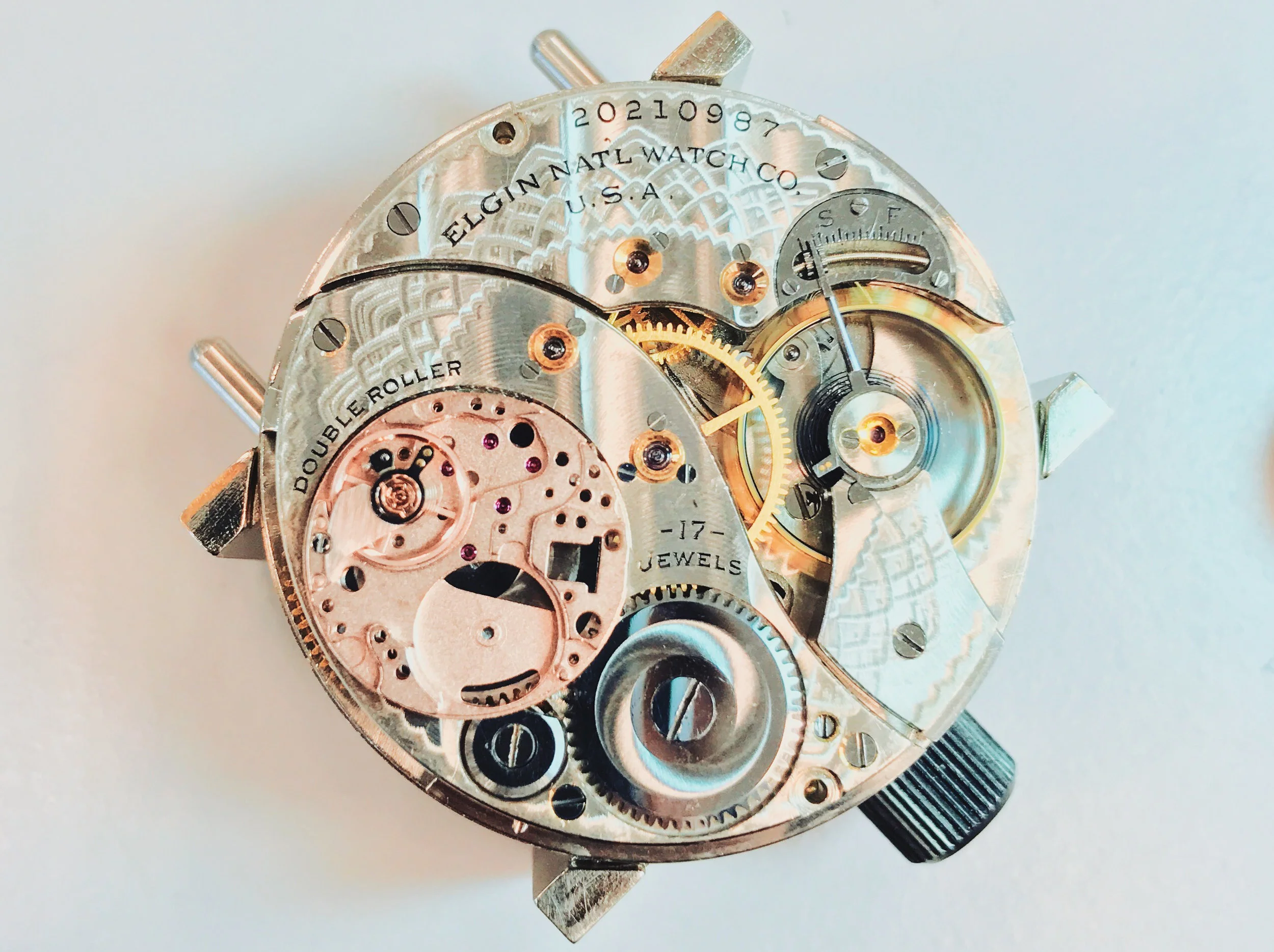Intro to Vintage Restoration

Real-life repair is a huge part of the second half of our watchmaking school program, and I'm getting my first taste on an Elgin pocket watch.
This is an Elgin grade 345 watch from 1917—something I didn't realize until I opened it up. Happy 100th birthday, watch! This particular watch was given to me in non-running condition in a box of horological junk by a family friend, but it's more dirty than broken. It's definitely salvageable.
100 years will do a lot to a watch, and this one is actually in fairly good condition, all things considered. There's some wear to the winding components and the mainspring is snapped, but most of the sensitive components are in good shape.
The first step in servicing a vintage watch is to clean out all the accumulated dirt and muck from its various nooks and crannies. The bigger surfaces can be soaked (briefly) in solvent and scrubbed.
The jewels are trickier, and because of their small size, they have to be cleaned out with wooden sticks in a process called "pegging." Yes, pegging.
After a trip through the ultrasonic cleaning machine, all of the hard work pays off. The movement is gleaming and ready for its repairs.
Watchmaking student at the Lititz Watch Technicum, formerly a radio and TV newswriter in Chicago.








